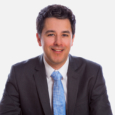Too much time for “live” - Facebook v Voxer IP: struggles with equivalence in a post-Actavis world
In this recent case, Facebook’s live broadcast feature was found not to infringe Voxer’s patent related to exchanging messages in “live” and “time-shifted” communication modes. Specifically, it was deemed that a minimum 10-second delay between content being captured by one user and being viewed by another user was “just too big” to fall under the interpretation of “live” communication in claim 1 of Voxer’s patent. Although not ultimate decisive to the case, some interesting Actavis equivalence issues were also considered.
Facebook’s alleged infringement
Facebook’s live broadcast feature allows a user to capture content using a device’s camera and microphone. The content is broadcast to viewers over the internet as it is captured (for example, via the user’s Facebook or Instagram page).
Voxer’s patent and non-infringement
In a nutshell, claim 1 of Voxer’s patent defined a method in which messages (comprising voice and video media) are exchanged over a communication network in either a “live” or “time-shifted” communication mode. Various features which enable this to happen, including encoding, storing, and transmitting steps were defined in claim 1. Claim 1 also defined that each message is stored and transmitted “at each hop” along a path over a communication network. Equivalence was discussed, in particular, for this latter feature.
If there’s no storage, there’s no “hop”
Under a “normal” (that is, purposive) interpretation of the claims, LJ Birss determined the claimed storage and transmission of messages “at each hop” meant a given message must be stored at each server in the network with persistent storage capability. It was determined this was not always the case with Facebook’s network, which included servers which had the capability to persistently store content but did not do so. Facebook therefore did not have this claimed feature.
What about equivalents?
When reviewed in light of Actavis, however, it was determined that Facebook’s use of multiple servers geographically distributed around the world mean that each “relevant” server is able to access the content it needs to. LJ Birss deemed this to deliver substantially the same result in substantially the same way as storing messages at each hop (as claimed) in a way would have been obvious to the skilled person (satisfying Actavis questions 1 and 2). It was also determined the skilled reader would not have thought the patentee intended strict compliance with the wording “at each hop” (satisfying Actavis question 3). Facebook therefore did have this claimed feature by way of Actavis equivalence.
Is this reasonable?
A finding of infringement for the feature “at each hop” is potentially controversial. Claim 1 had previously been amended to change the broader “at least one hop” to the narrower “at each hop” to overcome an added matter issue. Facebook therefore argued, perhaps understandably, that this implied strict compliance with the claim wording “at each hop” had been intended by the patentee. Actavis question 3 should therefore be answered in the positive and no infringement by equivalence found.
LJ Birss disagreed. He concluded that, although narrowing a claim to distinguish it from the prior art could have a bearing on equivalence (for example, if the patentee argued that “introduced wording should not be strictly complied with in order to cover the very thing it was introduced to exclude from the claim”), added matter is a “different kind of objection” to which such considerations were less likely to apply.
Some may find this conclusion surprising. As LJ Birss himself put it, added matter is a “legal principle … to protect third parties by holding the patentee to their disclosure”. Is the patentee truly held to their disclosure if, via Actavis, they are able to show infringement through a broader of interpretation of a claimed feature they previously narrowed specifically because they did not disclose that feature at the level of generality required for that broader interpretation? Is this not giving the patentee more protection than they are entitled to by their disclosure?
Conclusion
Although they weren’t decisive in this case, this decision demonstrates the ongoing issues that can arise when considering infringement in the UK post Actavis. In particular, it highlights the challenges the UK courts face in balancing the arguably broader rights of the patentee under Actavis with the need for legal certainty for third parties. The apparent distinction between prior art- and added matter-related amendments potentially adds a further layer of complexity to this.


